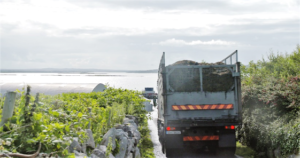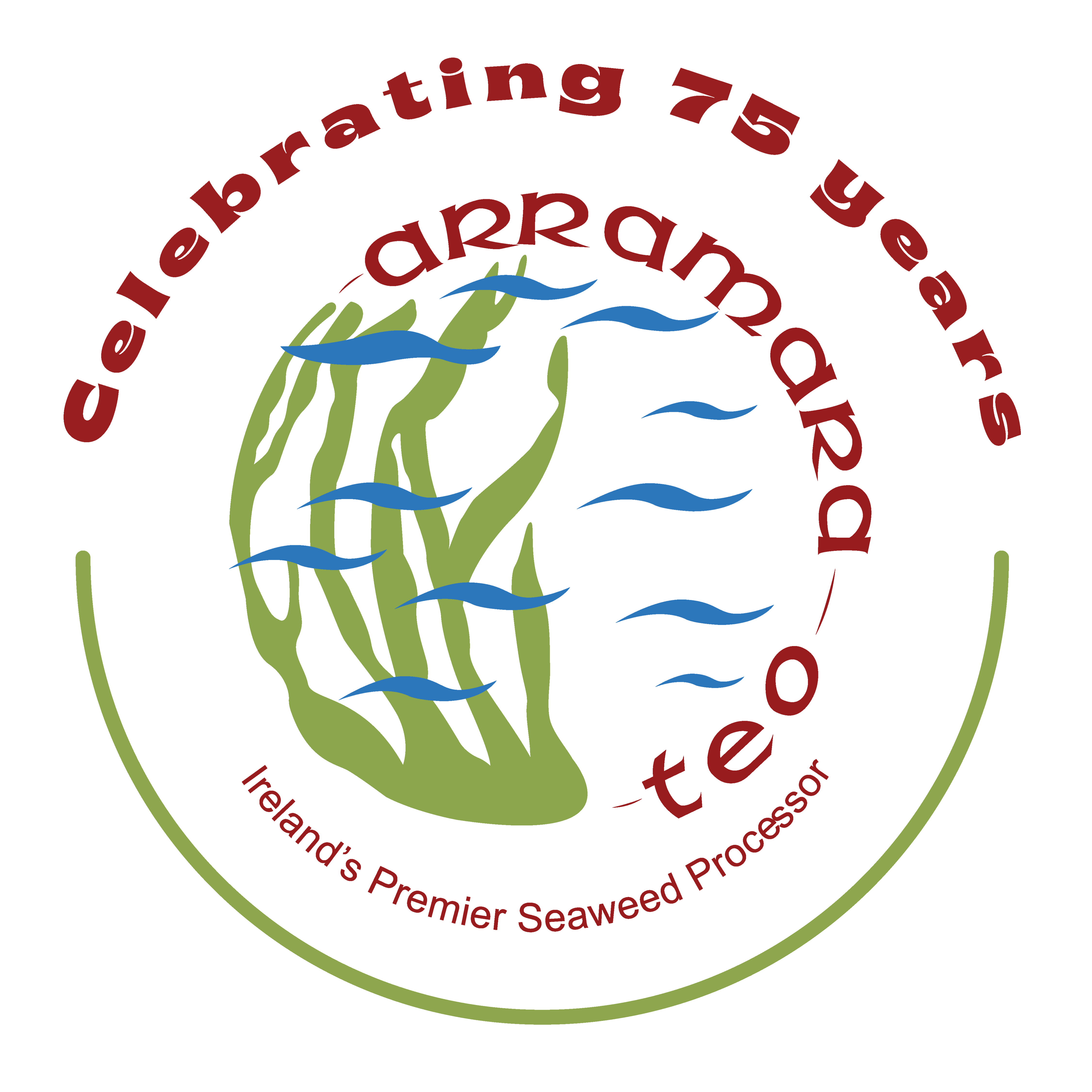At the end of a hard day’s work, people should have the reasonable expectation to return home safe and sound. Aside from each person being mindful of their actions to follow safety guidelines and avoid accidents, organizations themselves need to share in the responsibility to keep workers free from injury.
Since Ireland’s Safety, Health and Welfare Act of 2005, there’s been an ever-evolving occupational health and safety culture throughout Irish industry. Schemes and initiatives promoted by the Health and Safety Authority have pushed Ireland ahead of many other developed nations in protecting people. Yet it’s through the actions and stewardship of Irish companies that workers not only receive good paying jobs, but also get to enjoy workplaces that prevent major incidents and accidents. Arramara has achieved harmony with both.
What’s the key to our safety success? One is hiring incredible people like Maura Flaherty, our Quality and Safety Manager. For over 25 years, Maura has worked at Arramara, keeping our employees and members of the Kilkieran community safe, inside and outside our facility. Here’s the story of what she does and what she continues to do to make workplace safety a priority and keep our seaweed jobs safe.
Starting a Health and Safety Culture
When Maura returned from Dublin, looking for an opportunity in the Connemara region, she knew of Arramara’s longevity and its importance to the community. When Maura joined Arramara in the 1990s, the culture of health and safety. as we know it. was essentially lacking. In the years since, Maura has expanded her safety knowledge and abilities by keeping in step with the ever-evolving Health and Safety Authority programmes—and our facilities have grown with her.
Her first day was eye-opening. Upon walking down to the seaweed processing facility, Maura found there were few safety procedures in place with no signage nor emergency exits within the building and the Safety Manual did not suit the Arramara work environment. . It could have been overwhelming, and though she had initial hesitation, she came back the next day and set the tone for Arramara’s new safety culture going forward.
Maura said, “I went down the next day and said to the facility workers, ‘Alright lads, this is happening and you’re just going to have to do it.’ They’re used to it now. It took a while but now they know all our health and safety procedures are for them and their benefit.”

As with any change, there was bound to be some pushback. When Maura first began to encourage the use of high visibility (HiVis) clothing throughout the facility, there were members of the team who needed more convincing than others. Maura said, “They would say, ‘We’re not going to wear HiVis.’ And I would reply, ‘That’s fine. Some truck is going to come in and they’re not going to see you. I’m not going to be walking there without my HiVis, and if I am in the area, I’m wearing my HiVis all the time, so they’ll see me.’ And they would say, ‘Alright, we’ll do that to keep you happy.’ I’d say, “It’s not for me. It’s for you.’ It took some time, but now they understand that.”
It’s through Maura’s caring, direct approach, and how she consistently led by example that people within Arramara began to see and appreciate what it was like to have someone invested so heavily in their safety.
The Next Generation of Safety
More than just winning over hearts and minds, Maura and other members of the quality team needed to make significant changes to the Arramara facility. This ranged from relatively small adjustments like hanging the appropriate signage in critical areas to implementing a fire alarm system and updating the facility to create safer operating practices that benefited the overall community.
For example, the fire alarm system required substantial changes to achieve compliance with the Health and Safety Authority’s advancements. Maura and the previous general manager at Arramara knew they had their work cut out for them to achieve the hour fire-resistance rating mandated by the Authority as well as compartmentalizing the facility to slow the spread of fire in case of an accident.

Maura said, “There are lots of things someone unfamiliar with health and safety practices might not think about when designing a facility. Like a fire exit. Everyone thinks you can go out any door, but you can’t go out under something like a roller door. In fact, that’s why you always see another door next to a roller door in compliant buildings. The adjacent door is your emergency exit.”
In addition to emergency exits, they added sheetrock panelling to slow the passage of fire and added fencing to stairwells to protect people ascending and descending in all situations. Even with those massive strides in safety, there are ongoing measures to ensure Arramara remains compliant, and our employees stay safe. The fire alarms were just upgraded, which, as Maura pointed out, was probably a relief to people in the Parish who had to deal with the occasional false alarm at odd hours on the weekends.
There was also a major upgrade to the way seaweed was loaded into the Arramara facility. Before 2016, employees would drive one of our JCB loaders, with the tonne bag of seaweed in front of them, up a public road from the pier to our facility. Because the driver had limited visibility, we had an employee diverting traffic to prevent collisions with unprepared drivers. Though locals knew the routine, outside visitors did not, which was especially problematic when trucks were arriving late at night and products were being loaded.
Maura said, “It was a health and safety hazard for us, the community, and members of the public going up and down the road in this area. So, we put a loading bridge inside the facility, and opened up the back of the warehouse instead of the front so loaders spent less time on the public road, clearing up traffic issues in the process.”
Every investment over the years has furthered the cause of health and safety compliance, extending the scope and sphere of safety around of the Arramara facility. Yet this commitment to a better workplace was only the start.
Keeping the Community Safe
Exceptional companies do more than just create quality products or provide people with purposeful jobs: they work to improve the communities around them. In fact, when done right, each employee has an opportunity to use his or her own skills and expertise to make contributions to bettering the places where they live and work. Our health and safety team members are no exception. Some of the improvements we’ve introduced around Arramara have made the nearby roadways safer for residents and long-distance travellers. However, our commitment to the wellbeing of our own people has helped prepare them to help save lives outside of the workplace.
About ten years ago, Arramara installed a defibrillator on the exterior of the facility and worked to get all our staff certified as cardiac first responders at the community level. We even facilitated a free Automated External Defibrillator (AED) course for local fishermen and community members, getting the trainer to show them how to use the defibrillator and respond to someone until the ambulance arrives.
Even for the 75th anniversary event coming in September, Maura and the Arramara team will leave nothing to chance. Thanks to the annual Harvester Open Days they have at the facility, giving those who work on the shorelines a chance to see the fruits of their labour, they’re used to the logistics of having big crowds on the premises.
Maura said, “Usually when we do have an occasion like that, we assign two guys with walkie-talkies to walk around the event and they radio me if something needs my attention. Also, for safety reasons we have everyone sign in and out as part of traffic management. At all times, we need to keep space open for an emergency vehicle in case something happens to one of our guests, and that can be hard because people are parking wherever. You’ll be hearing me say, ‘No, you can’t park there.’”
Keeping Up with the Times
Even during unpredictable times, the health and safety team at Arramara are working towards the greater wellbeing. During COVID, we took quick action to prevent the spread of the virus and protect our people. All of the office staff went remote – except for one employee who didn’t have internet access at home – and the factory workers worked in staggered shifts with staggered breaks to reduce the amount of interaction. We cleaned hotspots four times a day and instructed our hauliers to remain in their vehicles during loading and unloading. And of course, everyone wore masks and social distanced.
Even the Arramara leadership team was working to keep progress moving forward. Maura said, “We were introducing the SAP Enterprise System to the facility around the start of COVID. That was especially challenging because Alan Considine, our Plant Manager, and I couldn’t go to the facility. Trying to ensure that health and safety is adhered to, while working at distance, was especially daunting, but we did it!”
With action on manufacturing safety practices like this even during difficult times, there’s a sense that Arramara is invested in the wellbeing of everyone who walks through our doors. As a result, it’s easy to see why people make our seaweed company their career home.
Maura said, “Once you come to Arramara, you stay here. I’ve been here for 25 years. Our maintenance guy retired two years ago before COVID and he was here for 45 years. There is a guy retiring in September who has been with us for 36 years and a guy retiring in June who has been here for over a decade. Arramara is a good place to work. It’s close to home, it’s full-time work and it’s safe. Because of that and more, people tend to stay here.”
Our manufacturing safety practices are just one example of the ways we invest in the west coast of Ireland. You can learn about how Arramara makes a difference for our workers, local community, ecosystem, and economy by visiting our blog.
Read our blog
Related Articles
Meet Toni Kennedy: Arramara Teoranta’s New Field Technician
Saved by Seaweeds: their important contributions in times of crisis!
